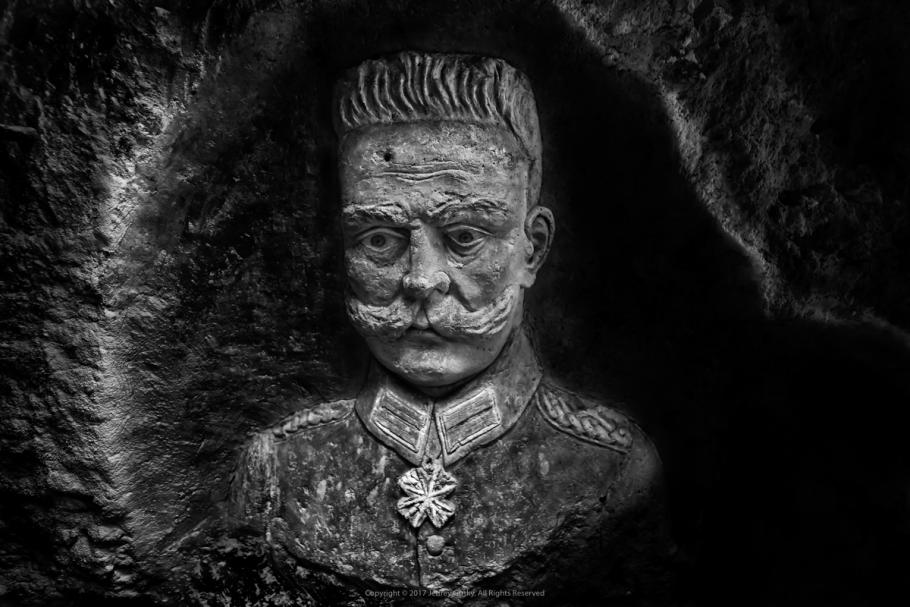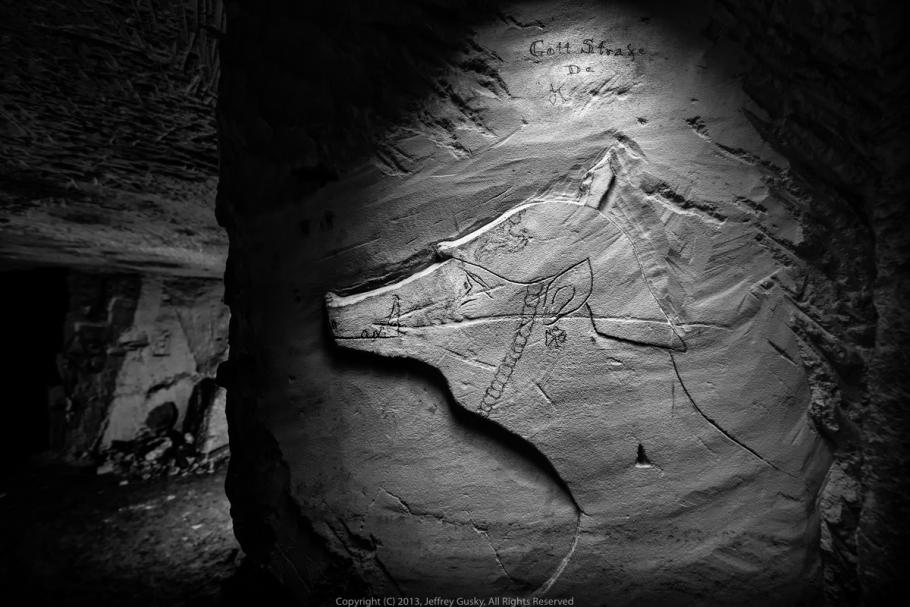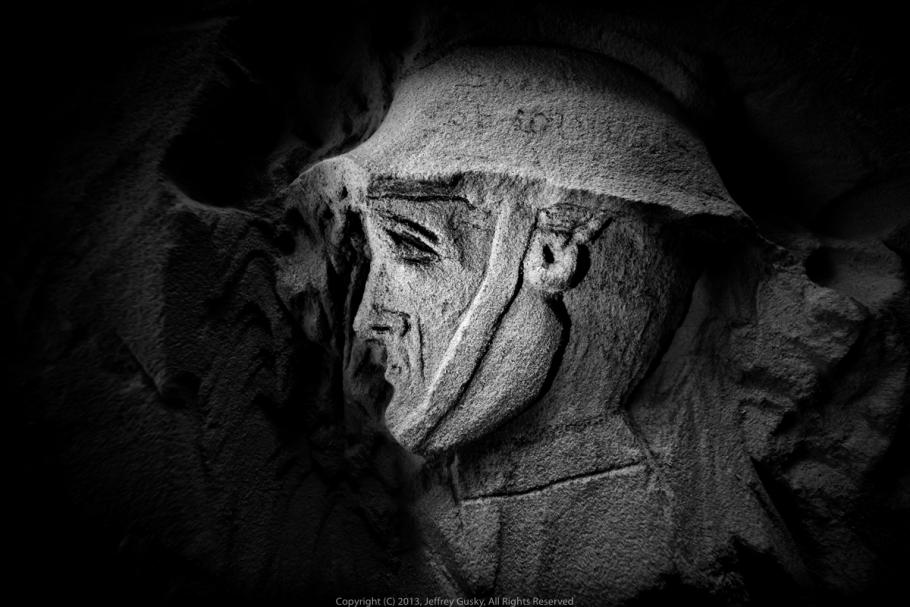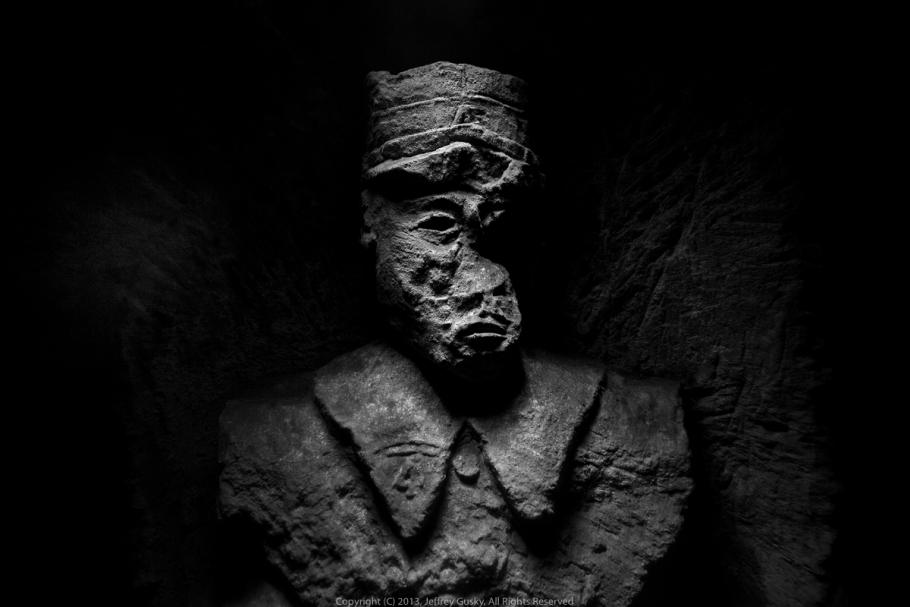Portraits were another typical subject matter of the soldiers’ carvings, and were among the most artistically rendered. They ranged from famous figures to self-portraits to caricature.
Over a period of several years photographer Jeff Gusky made numerous excursions into a forgotten world of underground WWI soldiers' living spaces and documented the stone carvings of the soldiers with high-end art photography. This is a portrait of Paul von Hindenburg, Chief of the German General Staff from August 1916 to the end of the war.
Paul von Hindenburg, Chief of the German General Staff from August 1916 to the end of the war.
Over a period of several years, photographer Jeff Gusky made numerous excursions into a forgotten world of underground WWI soldiers' living spaces and documented the stone carvings of the soldiers with high-end art photography. This is an example of some of that artwork.
This engraving is of Georges Clemenceau, French Prime Minister during World War I.
Georges Clemenceau, French Prime Minister during World War I.
Mocking caricature of Kaiser Wilhelm II, German Emperor during World War I. The inscription above reads: “God strike the Kaiser.”
Over a period of several years, photographer Jeff Gusky made numerous excursions into a forgotten world of underground WWI soldiers' living spaces and documented the stone carvings of the soldiers with high-end art photography. This is an example of some of that artwork.
Mocking caricature of Kaiser Wilhelm II, German Emperor during World War I. The inscription above reads: “God strike the Kaiser.”
Self-portrait of PFC Archie Sweetman. The signature “Sweetman of South Boston” in pencil still remains. Sweetman, of Company E, 101st Infantry Regiment, in the famed 26th “Yankee Division,” spent six weeks underground in February/March 1918. After the war he became a successful artist. He graduated from the Massachusetts College of Art in Boston in 1993 at age 98.
Over a period of several years, photographer Jeff Gusky made numerous excursions into a forgotten world of underground WWI soldiers' living spaces and documented the stone carvings of the soldiers with high-end art photography. This is an example of some of that artwork.
Self-portrait of PFC Archie Sweetman. The signature “Sweetman of South Boston” in pencil still remains. Sweetman, of Company E, 101st Infantry Regiment, in the famed 26th “Yankee Division,” spent six weeks underground in February/March 1918. After the war he became a successful artist. He graduated from the Massachusetts College of Art in Boston in 1993 at age 98.
What at first appears to be a vandalized carving is actually a purposely rendered half face. Still powerfully symbolic for the French today, the half face represents not only the physical scars so many soldiers were left with, but also the psychological scars of the war on French society in the post-war period.
Over a period of several years photographer Jeff Gusky made numerous excursions into a forgotten world of underground WWI soldiers' living spaces and documented the stone carvings of the soldiers with high-end art photography.
What at first appears to be a vandalized carving is actually a purposely rendered half face. Still powerfully symbolic for the French today, the half face represents not only the physical scars so many soldiers were left with, but also the psychological scars of the war on French society in the post-war period.
Photographs by Jeff Gusky




